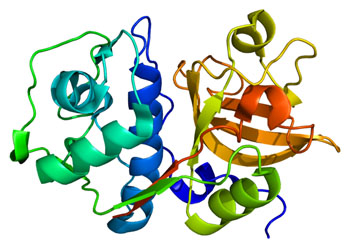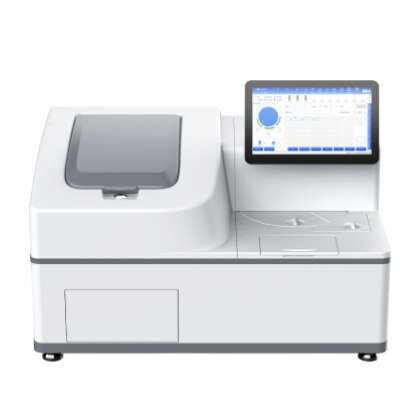Protein Imbalance Linked to Presence of Biomarker in Tears of Sjögren’s Syndrome Patients
By LabMedica International staff writers
Posted on 17 May 2016
Increased expression of cathepsin S (CTSS) activity has emerged as a unique biomarker in the tears of Sjögren’s syndrome (SS) patients.Posted on 17 May 2016
Sjögren’s syndrome, which affects mainly women, is an autoimmune disease caused by immune cells attacking the mucous membrane and fluid-secreting glands. Although its characteristic symptoms are in the eyes and mouth, the disease is systemic and can damage other organs including kidney, liver, and brain. Patients with SS also have a higher risk of developing lymphoma.

Image: A structural model of the cathepsin S (CTSS) protein (Photo courtesy of Wikimedia Commons).
Investigators at the University of Southern California (Los Angeles, USA) had previously identified increased CTSS activity as a unique characteristic of SS patient tears. Cathepsin S is a lysosomal enzyme that belongs to the papain family of cysteine proteases. While a role in antigen presentation has long been recognized, it is now understood that CTSS has a role in itch and pain, or nociception. The nociceptive activity results from CTSS functioning as a signaling molecule via activation of protease-activated receptors.
In the current study, the investigators evaluated the role of the proteins Rab3D, Rab27a, and Rab27b in the enhanced release of CTSS from cells in the tear glands (lacrimal gland acinar cells or LGAC).
In this study, the investigators worked with mice that had been genetically engineered to lack the gene for production of one or more of the Rab proteins. They reported in the April 13, 2016, online edition of the journal American Journal of Physiology—Cell Physiology that mice lacking the gene Rab3D had more cathepsin S in their tears while mice lacking Rab27 had less. The activities of Rab3D and Rab27 counteracted each other, and loss of Rab3D seemed to increase the influence of Rab27, contributing to the release of cathepsin S in the tears of patients with SS.
“We think that the large increase in tear cathepsin S is a fairly robust biomarker for Sjögren’s syndrome-mediated dry eye,” said senior author Dr. Sarah F.Hamm-Alvarez, professor of ophthalmology at the University of Southern California. “Earlier detection and treatment would offer the potential to prevent some of these serious systemic effects and the opportunity to prevent serious damage and loss of glandular tissue beyond repair.”
Related Links:
University of Southern California













